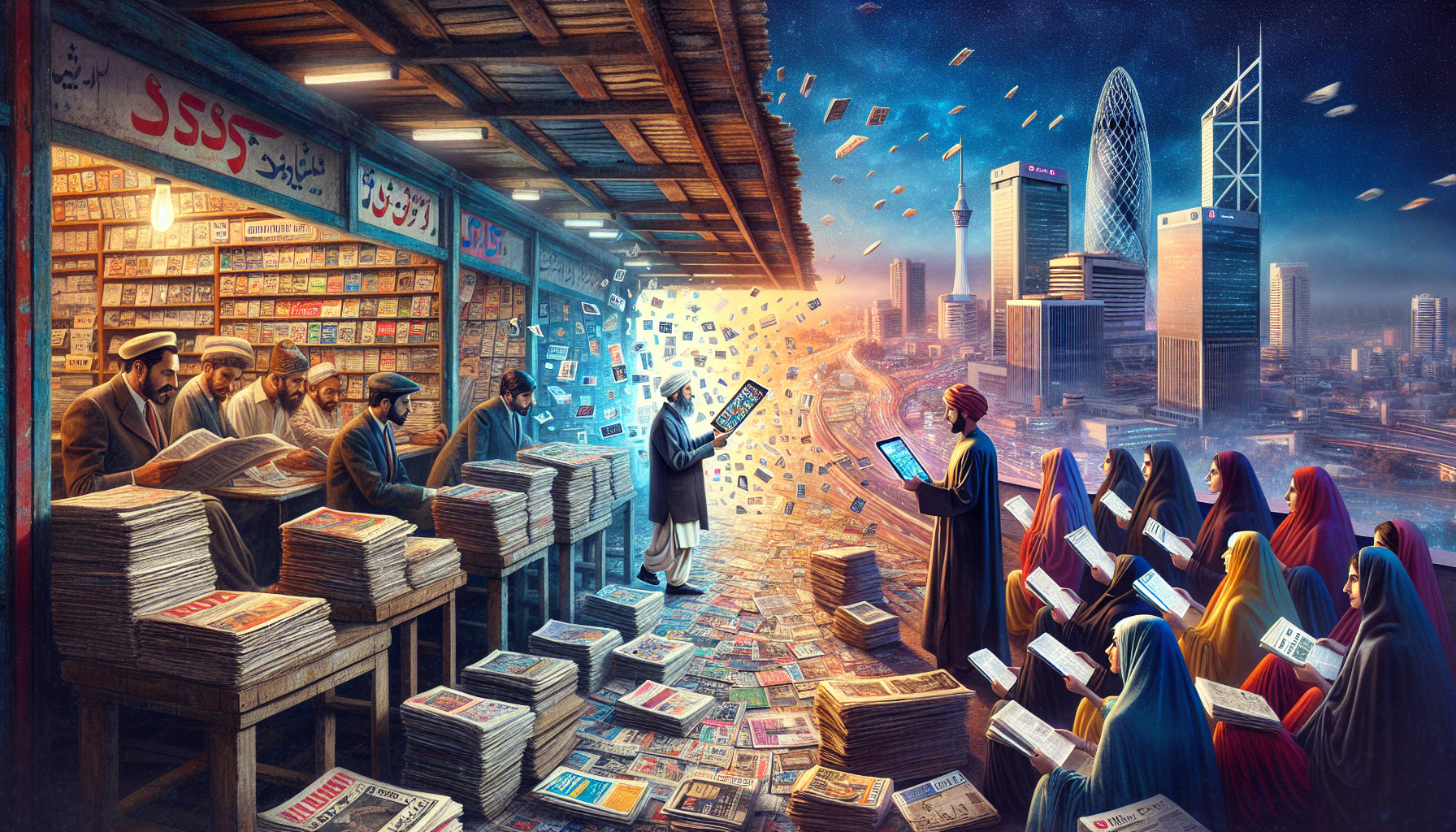
Have you ever wondered how print media in Pakistan has weathered the storm of digital disruption? From the golden age of newspapers to the rise of social media, the landscape of journalism in Pakistan has undergone a remarkable transformation. You’re about to embark on a journey through time, exploring the evolution of print media in a country where the written word has long been a powerful force for change.
As you dive into this fascinating topic, you’ll discover how Pakistani journalists have adapted to the challenges posed by the digital age. You’ll learn about the history of print media in Pakistan, the impact of print advertising, and the ways in which print media laws have shaped the industry. You’ll also gain insights into the strategies that traditional newspapers and magazines are using to stay relevant in an era dominated by online news. So, buckle up and get ready to explore the past, present, and future of print media in Pakistan!
1. The Golden Age of Print Media in Pakistan
You might be surprised to learn that the roots of print media in Pakistan stretch back to the 1780s. The Bengal Gazette, the first weekly political paper, paved the way for a flourishing print culture. As Pakistan emerged as a nation, newspapers like Dawn, founded by Muhammad Ali Jinnah, and Nawa-i-Waqt played a crucial role in shaping public opinion. These publications became the voice of the newly formed country, advocating for independence and national identity. During this golden age, print media in Pakistan experienced rapid growth, with numerous newspapers and magazines springing up across major cities. Journalists wielded significant influence, and print advertising became a powerful tool for businesses to reach their audience.
2. Digital Disruption and Its Impact
You’ve witnessed a seismic shift in Pakistan’s media landscape. Social media platforms like Facebook, Twitter, and YouTube have revolutionized traditional journalism. News organizations are adapting their business models to embrace digital culture for survival. Many journalists are ready to leave traditional media if they can carve out a space for themselves on social media. This digital transformation has a profound influence on how media outlets connect with their audience. Online media has facilitated rapid news delivery and increased reach. However, it’s also led to audience fragmentation and declining profitability for news organizations. Print media in Pakistan faces significant challenges as digital alternatives gain popularity, forcing the industry to evolve or risk obsolescence.
3. Adaptation Strategies of Pakistani Print Media
You’re witnessing a transformation in Pakistan’s print media landscape. To stay relevant, newspapers and magazines are adopting hybrid approaches, blending traditional formats with digital presence. This strategy allows them to reach a broader audience and secure their future in a rapidly evolving media environment. Print media organizations are embracing technology to improve efficiency and transparency. They’re also focusing on convenience and timeliness to address changing media consumption patterns. Some publications are reducing their regular staff and connecting with freelancers who can multitask, from newsgathering to publication and dissemination using mobile phones. This adaptation has led to cost reduction in news gathering and distribution processes. As print media in Pakistan continues to evolve, it’s clear that the future of journalism is digital, with algorithms potentially replacing the role of editors and gatekeepers.
4. The Future Landscape of Print Media
As you look ahead, you’ll see that print media in Pakistan faces significant challenges. The industry is experiencing a steep downward slope, with even large media groups rethinking their strategies to survive. The digital revolution has a profound impact on readership, with actual circulation numbers dropping from hundreds of thousands to mere thousands. However, print media isn’t doomed. Some newspapers are adapting by embracing digital platforms, incorporating multimedia elements, and leveraging social media to expand their reach. The future may lie in customized content, where readers can access only the items that interest them, potentially through tablet newspapers with LCD screens. Despite the uncertainties, the resilience and innovation shown by some news organizations offer a glimmer of hope for print media’s future in Pakistan.
5. Conclusion
The journey of print media in Pakistan has been a rollercoaster ride, from its golden age to the challenges posed by the digital revolution. The industry’s transformation highlights its resilience and adaptability in the face of changing media consumption patterns. Traditional newspapers and magazines are embracing hybrid approaches, blending print and digital formats to stay relevant and reach a wider audience.
Looking ahead, the future of print media in Pakistan is uncertain but not without hope. While circulation numbers have dropped dramatically, some news organizations are finding innovative ways to adapt and thrive in the digital age. The key to survival lies in embracing new technologies, customizing content, and leveraging social media platforms to connect with readers. As the media landscape continues to evolve, it’s clear that print media in Pakistan must keep innovating to secure its place in the future of journalism.
FAQs
The term refers to significant developments in the field of print media, starting with the Gutenberg Revolution around 1440. Johannes Gutenberg’s invention of the printing press marked a pivotal moment, enabling the mass production of books and other printed materials through the use of moveable type.
In Pakistan, print media is diverse, with newspapers and magazines published in 11 different languages, predominantly in Urdu and Sindhi, though there are several English-language publications as well. While most print media outlets are privately owned, the government manages the Associated Press of Pakistan, a major news agency.
The landscape of print media is shifting towards digital platforms, with local newspapers closing and national publications reducing print circulation in favor of online versions. Despite these changes, the transition opens up new opportunities for journalists, advertisers, and content creators.
The expenditure on print advertising is projected to decline over the next few years. Specifically, newspaper advertising revenue in Pakistan is expected to decrease from PKR 3793.45 billion in 2021 to PKR 3319.27 billion by 2025, reflecting a compound annual growth rate (CAGR) of -2.0%.

